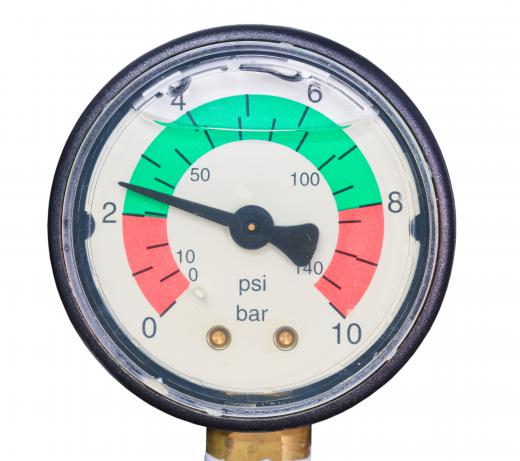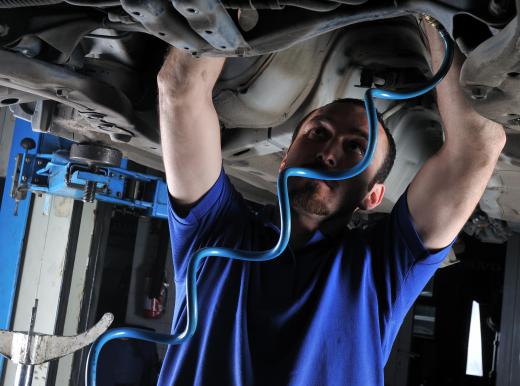A pneumatic compressor, or an air compressor as it is also called, is a device used to compress and store air under pressure. Commonly consisting of an electric or gasoline-powered motor, compressor and storage tank, a pneumatic compressor is used to provide air pressure to operate air tools, provide air to inflate tires and air-filled toys as well as to power painting tools. The typical pneumatic compressor uses a pressure-sensitive gauge to turn the compressor motor off when a desired air pressure has been reached inside the pressure tank. This switch prevents accidental explosion due to over-pressurizing when operating correctly.
The pneumatic compressor is available in very small sizes to very large sizes, with every size operating on the same principle. A pneumatic compressor operates by having a motor turn a compressor while channeling all of the compressed air into a storage tank. The type of motor can vary greatly, from a small electric version to a large diesel engine. Small, single-stage compressors are commonplace on home-use compressors, while large, screw compressors are used on industrial-sized pneumatic compressor units. These larger compressors are often used in manufacturing plants where a great deal of air volume is required.

For the home mechanic or hobbyist who also requires increased air flow, a dual-stage compressor is typically used. The dual stage, commonly a reciprocating style compressor or pump, uses two cylinders to create an increase in pressure as well as a steady flow of air into the compressor unit. The first cylinder of a dual stage is considered the first stage. The first stage pushes compressed air into the second cylinder or second stage where it is compressed even more before being sent to the reservoir tank. This greater pressure gives the dual stage compressor the ability to operate air tools for a greater time and at a greater pressure than a comparably-sized, single-stage compressor.

A modern pneumatic compressor uses a pressure-sensitive switch to control the input of compressed air into the pressure tank. Left unbridled, the compressor could potentially pump compressed air into the pressure tank until the tank bursts at the seams. This is a potentially deadly scenario that is kept in check by switching the compressor motor and pump off at a predetermined point and pressure. Once the pressure falls below another predetermined point, the compressor once again switches on and resumes pumping air into the pressure tank.
